ABOUT THE TWGS
The core of JEAP’s mission is driven by its Technical Working Groups (TWGs), eight specialized teams powering the initiative’s impact. With six primary TWGs and two cross-cutting TWGs, each TWG is composed of dedicated experts committed to advancing health progress across Africa.
Focus Areas
Progress of Technical Working Groups

Overview
Strategic 5-year action plans guiding each collaboration area
As of May 2024, five technical working groups (TWGs) completed detailed action plans and began implementing activities leveraging JEAP seed funding and internal funding from each of the founding agencies: Workforce Development; Response Readiness and Coordination; Surveillance including Laboratory and Genome Sequencing; Country Assessments in the Preparedness Context; Logistics, Stockpiling, Supply Chain and Local Manufacturing. Three newer TWGs – Climate Change in the EPR Context, Community Engagement, Digitalization – are in the process of validating their action plans as of May 2024 and opportunistically conducting collaborative activities. TWG Action Plans build upon and streamline the efforts of both agencies. They define joint strategic objectives, assigning a lead agency for each objective to create efficiencies and selecting strategic activities based on Member State needs.
Highlights from early implementation
Overall, 36 of 55 countries have been directly served by key projects of the JEAP initiative since 2022.
The remaining countries on the continent have been served through JEAP regional strategies and tools. Across TWGs, activities strategically target service areas where regional intervention can be catalytic. These include:

Developing, promoting and supporting countries to adapt regional tools

Facilitation cross-border coordination

Pooling resources and knowledge
Activities that have been completed so far demonstrate the potential for the Partnership’s impact. For example, in the workforce development collaboration area, which has the longest history, the Partnership demonstrated the power of pooling regional resources by jointly training 1,350 AVoHC-SURGE emergency responders, with 14 countries now deploying these responders. This has resulted in immeasurable impact at the country level, with AVoHC-SURGE teams contributing to timely and effective response to and closure of emergencies.
In response readiness and coordination, the Partnership launched a key regional tool to strengthen emergency coordination: the first-ever multistakeholder Strategic Plan for Strengthening Public Health Emergency Operations Centres in Member States of Africa and Eastern Mediterranean Region. The Partnership is now actively supporting Member States to adapt the strategy to national contexts and begin implementation.
Other highlights across collaboration areas include conducting joint advocacy to secure blanket customs clearance to speed up the delivery of essential medicines, facilitating cross-border simulation exercises, and joining forces to operate a pan-African network of 12 specialized laboratories across the continent to enhance genomic sequencing. Implementation progress is described in more detail for each Collaboration Area in the following sections. Across all Collaboration Areas, capacity building efforts were a focus of the first year and will continue to be prioritized to encourage sustainability.
Since the launch of International Health Regulations (IHR, 2005), Member States across the African continent have invested in strengthening IHR preparedness capacities to enhance detection, prevention, and response to public health emergencies. Several assessments in line with IHR Monitoring and Evaluation (M&E) Framework and Performance of Veterinary Services (PVS) Pathway have been implemented to monitor and evaluate capacities’ development in preparedness in human health services, veterinary services and aquatic and animal health services. These instruments have assessed the status of preparedness and enabled documentation of progress countries have made in building their capacities.
Country Assessments
Since the launch of International Health Regulations (IHR, 2005), Member States across the African continent have invested in strengthening IHR preparedness capacities to enhance detection, prevention, and response to public health emergencies. Several assessments in line with IHR Monitoring and Evaluation (M&E) Framework and Performance of Veterinary Services (PVS) Pathway have been implemented to monitor and evaluate capacities’ development in preparedness in human health services, veterinary services and aquatic and animal health services. These instruments have assessed the status of preparedness and enabled documentation of progress countries have made in building their capacities.

